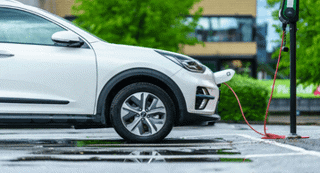Insurance telematics will become the 'norm' within the next five years, according to one of the country’s biggest providers.
But with a myriad of products and providers in the fleet market, an industry-wide agreement for measuring driving behaviour is needed to provide a platform for growth.
Zurich launched Zurich Fleet Intelligence (ZFI), which uses telematics technology together with driver training to reduce risky driving, in 2010. The insurer told Fleet News that corporate customers’ feedback had been “really positive”.
Nick List, ZFI European proposition manager, said: “It’s still relatively early days for the corporate insurance telematics market with only those organisations that are totally focused in controlling risk adopting the technology at this time.
“However, we believe that in five years it will become the norm for customers to utilise telematics technology in one form or another.”
One Zurich customer, a global document management and storage company, began a pilot of ZFI in 2010, installing the equipment in 32 vehicles. After 10 months it had achieved a return on its investment, with a 15% improvement in fuel efficiency, 13% reduction in collisions, 40% year-on-year reduction in own-damage costs and 30% fall in third-party costs.
“The company submitted just three minor insurance claims during the period,” said List. “This led to a deployment of the solution to their entire fleet.”
The improvement telematics can make to driver safety is compelling for businesses, suggests Zurich. “This in turn delivers cost savings, which is especially important in these challenging economic times,” List continued.
“Given the Government’s emphasis on businesses cutting their carbon emissions, telematics can also have a key role in helping organisations achieve their regulatory requirements.”
With many types of telematics product available to fleets and insurers offering different propositions, Zurich says consistency will be crucial to enable fleets to make accurate comparisons.
Zurich works with five telematics providers, including Trimble and GreenRoad, while Towergate recently announced a partnership with Quartix. Earlier this year, TomTom struck a deal with Equity Red Star.
Aviva re-entered the telematics market in June 2011 after its first foray in 2005 when, as Norwich Union, it was the first to launch a pay-as-you-drive product. The Aviva fleet telematics insurance proposition is offered on a three-year deal which provides customers an opportunity to earn an annual profit share rebate, but it is not linked to any particular provider.
Mark Keavney, commercial product development manager at Aviva, said: “We have made the conscious decision not to work with any single telematics supplier, thus allowing customer choice as to which telematics system meets their business needs.
“As long as the devices are capable of capturing data such as maximum speed notification, percentage of time over limit, abnormal accelerating, braking and cornering, journey direction, distance travelled, vehicle type, individual driver and management reporting facility, the customer can have access to our insurance product.”
Zurich says it is essential that there is an agreed industry-wide criteria for measuring driver behaviour, so that businesses which adapt this technology can make accurate comparisons and receive consistent feedback from insurers.
It’s an issue that Linden Holliday, CEO of MyDrive Solutions, has previously highlighted.
He said: “If the industry is to really develop premiums that reflect a driver’s behaviour, it is imperative to move beyond the tools currently being used and opt for detailed monitoring of driver behaviour.”
List concluded: “The challenge for the insurance industry will be to identify and understand the right technology that will make a difference to the levels of risk, which will typically be those that truly identify driver behaviour.
“Our customers’ challenge will be selecting the telematics solution that makes the difference.”






















Login to comment
Comments
No comments have been made yet.